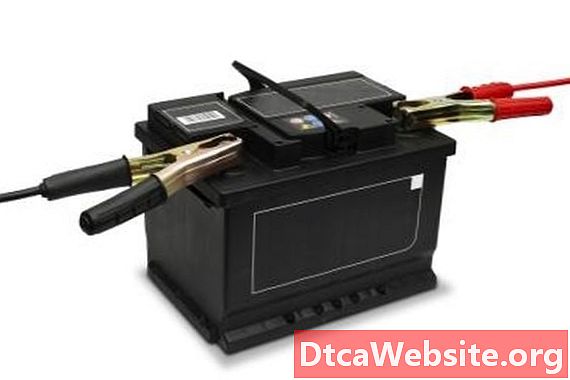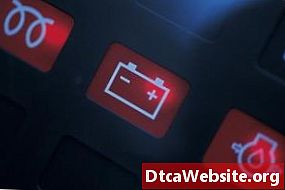
Contenu

The solenoid on an outboard engine has the important function of transmitting battery voltage to the starting motor. When the contact inside the starter solenoid activates electronically, a circuit opens that passes electrical current from the battery to the starter, which turns the engine over. Shorts or disconnected wires on the solenoid can prevent the engine from starting. A fairly simple component, the solenoid can be checked for proper operation using a few simple tools and steps.
Step 1
Pull off your upper engine case, unclasping the cowl snaps by hand. Use a socket and wrench if the upper case has bolts. Make sure your lanyard cut-off switch has not been activated so that when you turn the ignition key the engine will start. Pull the spark plug boot from the tip of the spark plug; pull all spark plug boots if the engine has multiple cylinders. Connect coat hanger wire to the inside of the plug wire connector and ground it against the engine block. Ground all plug wires in similar fashion.
Step 2
Place the positive lead from a voltmeter to the positive side of the main battery. Connect the negative lead of the voltmeter to bare metal on the engine. Look for at least 12.6 volts or more. Any reading less will require you to charge the battery to full capacity.
Step 3
Check your cabin fuse box. Make sure the starter fuse or relay sits tight in their connectors and that the fuse element has not blown. Replace any fuse or relay that looks bad. You exchange the starter relay with another similar relay in the fuse box, then test for starter operation. If the engine starts, the relay was bad.
Step 4
Look for the starter solenoid next to the starter on the engine block. Refer to your owners manual for its precise location. Place the voltmeter positive lead to the large "Bat" connection (usually a red wire) on the solenoid, with ignition key in the "on" position. Look for 12.6 volts. If if does not read 12.6 volts, check the fuse box wires and the main electrical cut-off switch. Turn the key off.
Step 5
Place the voltmeter positive lead to the smaller wire terminal on the solenoid (usually purple or yellow), and the voltmeter negative lead to a ground source. Have your assistant turn the key to start the engine. The voltmeter should read 12.6 volts or more. Listen for the solenoid to click and the starter to spin. If you do not have 12.6 volts and the starter does not spin, you have a problem with the ignition switch.
With the ignition key on, place the end of a jumper wire on the large "Bat" terminal on the solenoid. Place the other end of the jumper wire on the second solenoid post. If the solenoid has three posts, you will jump the two largest terminal posts on the solenoid. If the solenoid does not click or the starter does not spin, the solenoid has a defective short and must be replaced. If the solenoid clicks but the starter does not spin, the starter has an internal short and must be replaced.
Items you will need
- Boat owners manual
- Socket set
- Ratchet
- Coat hanger wire
- Voltmeter
- Assistant
- Spare jumper wire


